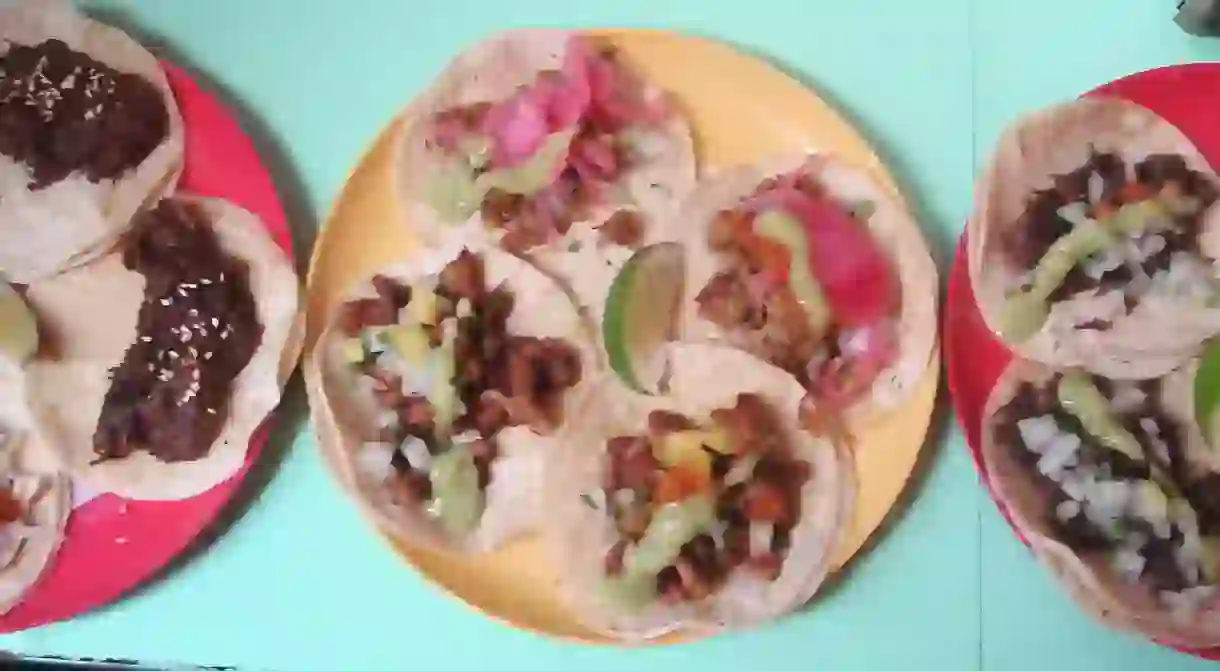Everything You Need To Know About Mexico's Favourite Food, The Taco

Simply the stereotypical Mexican dish, tacos in their most basic definition are corn or flour tortillas which wrap or fold around a typically meaty filling. They’re then usually topped with cebollita y cilantro (diced onion and coriander), before being modified with the optional spicy salsas, guac, radish, squeeze of lime and other extras of your choosing. Here is everything you need to know about the most delicious of roadside snacks, the taco.
While the origins of the word taco remain murky, with proposals ranging from the Nahuatl word for ‘in the middle,’ tlahco, to the word Mexican miners used for ‘plug’, the roots of the dish itself are slightly clearer. An undoubtedly pre-Hispanic dish, evidence of this clearly indigenous food has been found dating back to the peoples of the Valley of Mexico. Spanish conquistador Hernán Cortés supposedly served tacos for his captains in Coyoacán, too.

The earliest tacos, consumed as previously mentioned in the Valley of Mexico, were thought to be of small fish. However, nowadays the typical taco is a meat version. Meat options range from the fruity tacos al pastor (Shepherd style), which are made from spit roasted pork slices infused with pineapple juice and sometimes served with pineapple slices, to the more typical beef options of asada and bistek, or lamb barbacoa. Alternatively, there are tacos de chorizo and of various ‘weirder’ cuts of meat such as lengua (tongue), labia (lip) and ojo (eye). Nonetheless, tacos de pescado (fish) or de camarón (prawn) are still widely available, most typically on the Mexican coastline where fresh supplies are more abundant. Usually battered, the fish and prawn versions are lighter and considerably less greasy than their meat counterparts, and feature lettuce, avocado and pico de gallo.

While many people think of the hard shell versions of tacos, popularized by chains in the US, the traditional taco features a soft tortilla outer and a tender, greasy inner of meats such as asada (beef), lengua (tongue) and bistek (beef). However, there are numerous variations on the typical taco which are also both delicious and popular in Mexico.
In Zacatecas, the regional specialty is the deep fried greasy delight that is the taco envenenado (literally, poisoned taco). These are oversized, doubled-over tortillas stuffed with potatoes and topped with super spicy salsa. A local favorite variation on the traditional taco in Guadalajara is known as the taquiqueso. Served at the El Güero taco stand, just off Chapultepec Avenue, these are doubled up tortillas with extra melted cheese and toppings galore. You can also get hard shell tacos in Mexico, known as tacos dorados or flautas, which are much better than the US versions.

Tacos can be bought from almost any street food vendor in Mexico, which are often found in abundance in every single village. Otherwise, check out the indoor markets, as there will always be at least one taco stand to satisfy your taco cravings. Some of the best tacos in Mexico City are to be found at El Fogoncito according to local experts. Finally, National Taco Day is celebrated on October 4th, so pencil it in, and make sure to try out some authentic Mexican tacos.














